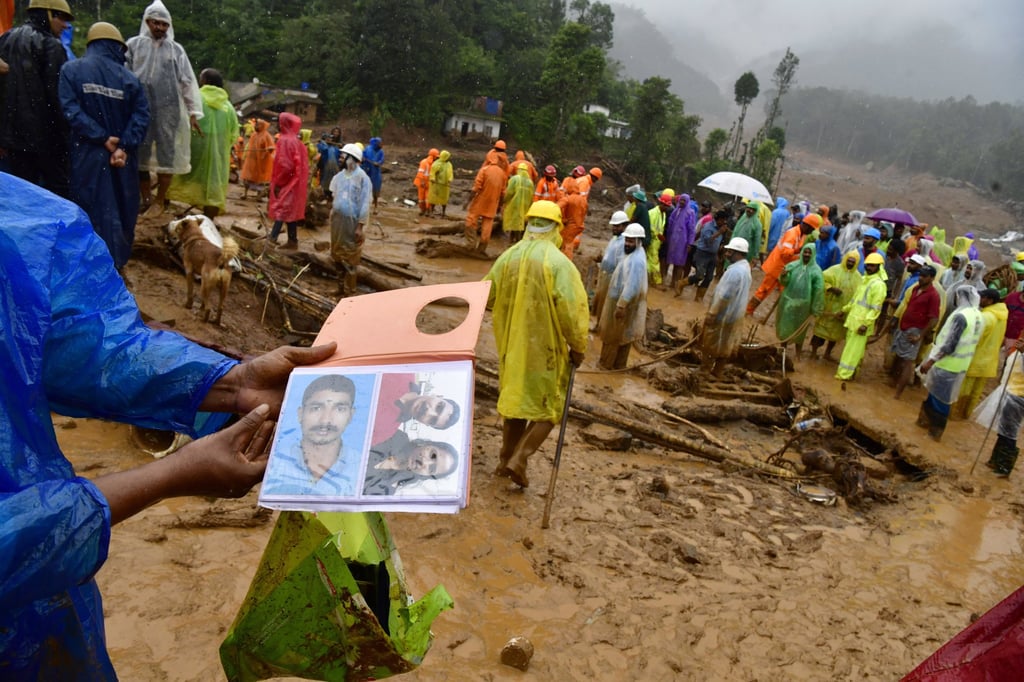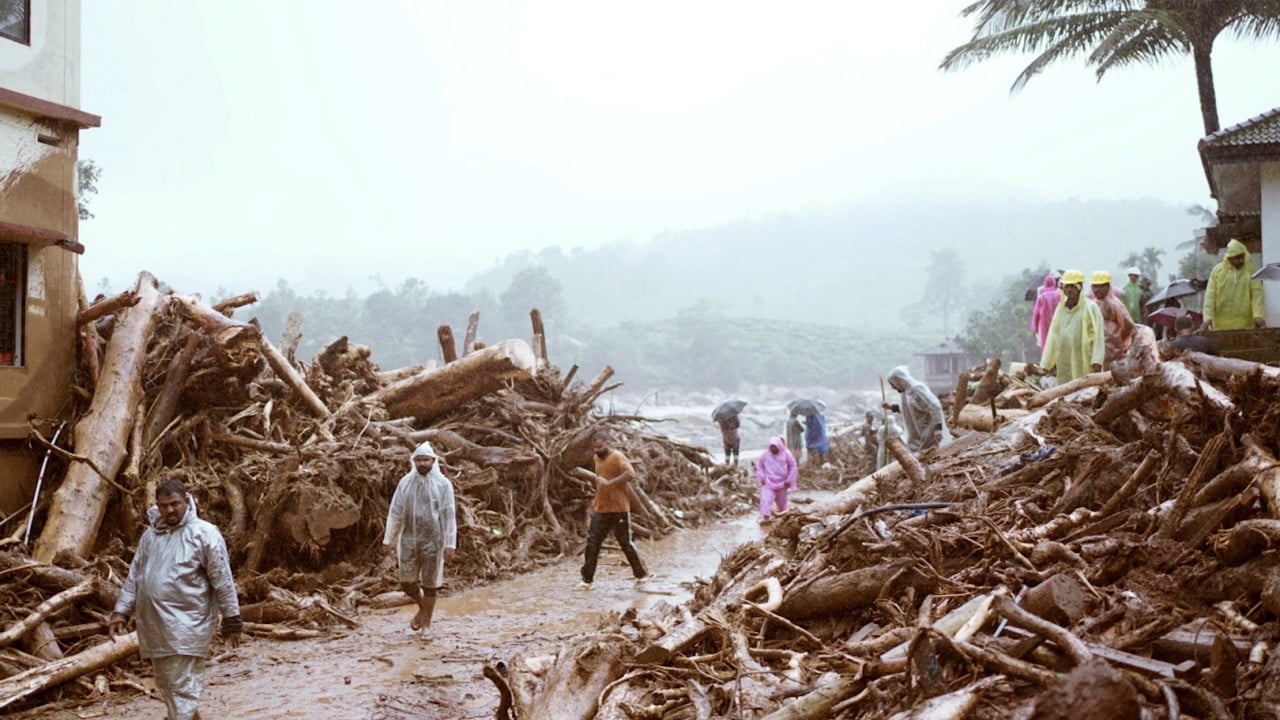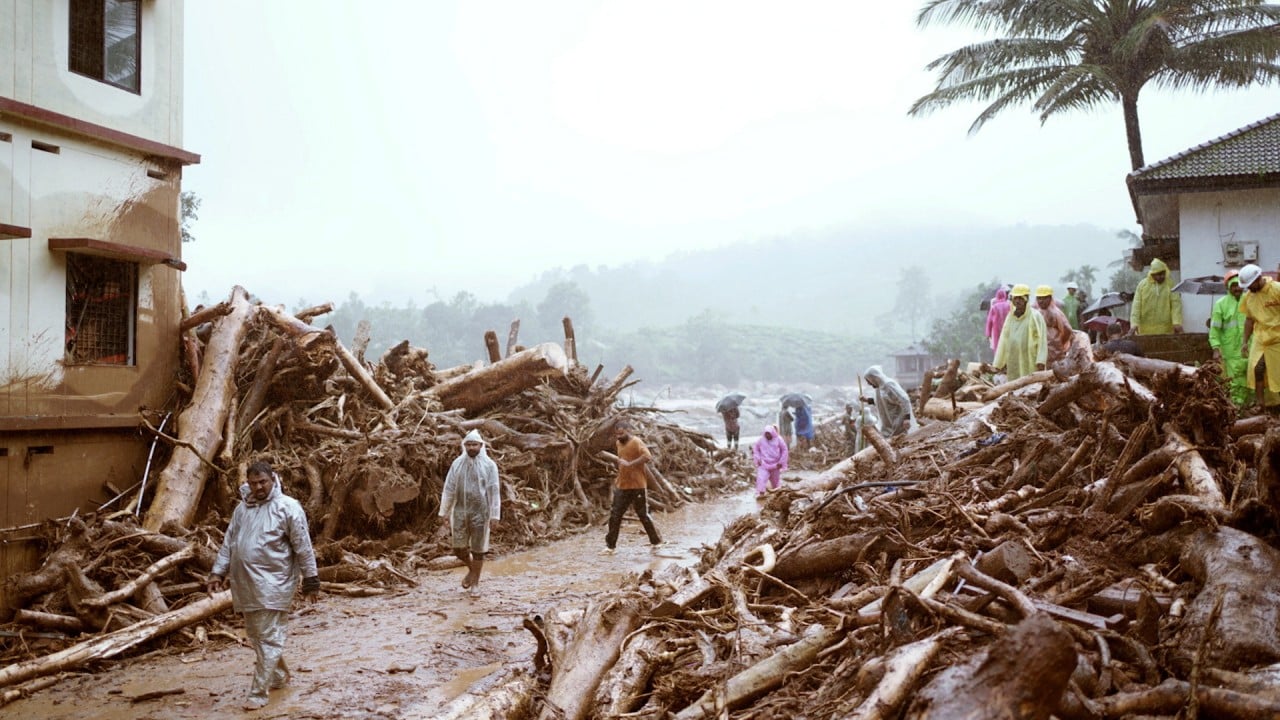The deadly floods triggered by heavy rains in the southern Indian state of Kerala were the latest in a streak of disasters that could have been avoided through better planning, according to experts.
While the extent of the disaster is hard to ascertain, media reports pin the death toll at more than 150, as rescuers wade through mud and debris looking for hundreds still missing.
Most homes across the Wayanad district, which was struck by a landslide in the early hours of Tuesday after a prolonged spell of heavy rain, have been razed to the ground, said Samshad Marakkar, president of the local district council. What is left, he said, is beyond repair.
As India strives to modernise its most remote regions, ecologically fragile areas like Wayanad are becoming increasingly prone to unplanned development, which according to researchers increases their vulnerability to extreme events.
Disasters like this week’s in Kerala follow a similar pattern to those seen in other parts of the country, such as the sinking of the town of Joshimath in mountainous Uttarakhand, said Abinash Mohanty, sector head for climate change and sustainability with research firm IPE-Global.
“These are disasters in the making, rather than one-off events,” he said. When new, poorly designed settlements burden an already fragile environment, “a small shock or stress is enough to aggravate the situation, and you recurrently witness events like Wayanad’s.”

Researchers in India have been mapping landslide-prone areas across the country for some time, and preparedness measures are in place in Kerala, a coastal state prone to extreme weather. But Mohanty said current development planning methods are outdated.
“You need to do hypergranular climate risk assessments to map the cascading impacts of these hazards,” which include weather changes as well as an analysis of land fragility.
The torrential rains of the past two days, which climate scientists predict are going to intensify in the future, are one example of such unaccounted stressors.
Under climate change, the air becomes warmer and can hold more moisture, said Yogesh Patil, chief executive of India’s largest private weather forecaster, SkyMet. This leads to the development of vertical clouds that can discharge very heavy rains in a short amount of time.
“Rainfall which usually occurs in a span of 24 to 48 hours is happening in a span of two to three hours,” he said. “A heavy downpour is more dangerous in hilly regions as the water is channelised into a stream, and decrease in forest cover increases this vulnerability.”
As relief efforts continue in western Kerala, Samshad Marakkar said disaster-struck communities now expect a proper rehabilitation and relocation package, because reconstruction in the area is simply impossible.
“It will be nearly impossible to rebuild houses in the same locality. There is no land remaining, but a river,” he said.



